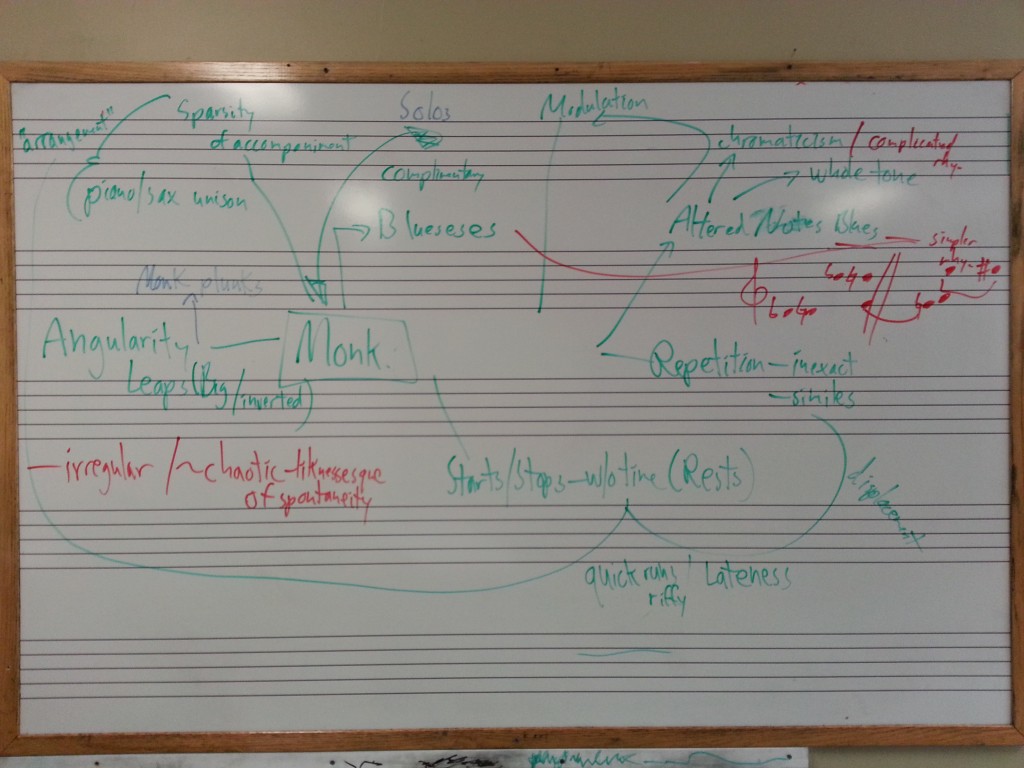For lack of a better word you could call Frank Zappa a
MAXIMALIST
He made use of EVERYthing, all that came within reach. In some ways he is a MAM dream come true.***
The seminal example is Lumpy Gravy, parts Varèse, Cage, Partch, R&B, surf music, theatre of the Absurd, concrète, électronique (and perhaps some Europeans too).
As a musical model, Zappa is great for teaching, as a demonstration of how influences can intertwine, how the rhizome can be noduled together, with great results and with great success. However, the maximalists, having gathered together EVERYthing, leave little left for those who come after…
So, looking beyond Zappa, what comes next? What stones did Zappa unturn only slightly?
consider these examples:
1) “Promiscuous” from 1988
2)”Dumb All Over” from 1981
RAP, PUNK (?), POLITICS—were the Beastie Boys listening?
3) “Porn Wars” from 1985
COMPUTER MUSIC, SAMPLES, ASSEMBLAGE, POLITICAL, from senators to rock-stars. Was Public Enemy listening?
4) “Tinseltown Rebellion”
Is this PUNK? a commentary on LABELS? PASTICHE?
5) “Stairway to Heaven” (reggae/ska style!!) from 1988
SACRILEGE? PASTICHE? RE-IMAGINING THE CLASSICS?
Another thing to take from these examples is the ‘jump-cut’, that is the sudden changes in tempo, key, mood, timbre, instrumentation, with little respect for the traditional ‘cadence’. Often, such cuts were created in the studio, as was found on much of the second side of 1981’s You Are What You Is, cuts which were then re-learned and then performed live
ZAPPA through the 80s had thoughts on the stench of Jazz, the emptiness of 80s Americana in general.
On a different note, he seemed to have some interesting connections and influences with the American Hardcore-Punk Scene, specifically the Jello Biafra and the Dead Kennedys, Henry Rollins, the Butthole Surfers and the Minutemen.
***
Yet in other ways, since humor is the backbone for most of his musical deeds, most people tend to judge him by that “humor” and many find it wanting: too off-color, it cuts too deep—anger, homophobia, anti-feminism, the sexual mis-deeds of his musicians and road crew…


